Space Image of the Day Gallery (September 2017)
Enceladus Sets Behind Saturn
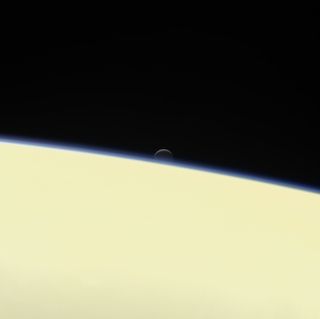
Monday, September 18, 2017: Saturn's moon Enceladus sets behind the planet's horizon in this image from NASA's Cassini spacecraft. This is one of the last photos Cassini took before plummeting into Saturn on Friday (Sept. 15). — Hanneke Weitering
So Long, Pac-Man Moon!
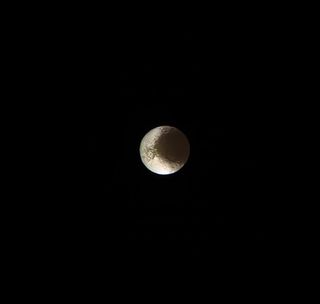
Tuesday, September 19, 2017: Before NASA's Cassini spacecraft dove into Saturn last Friday (Sept. 15), it bade farewell to Iapetus, one of Saturn's "Pac-Man" moons. Also known as the "yin-and-yang" moon, Iapetus is bright on one side and dark on the other. Cassini's final photograph of Iapetus was taken on May 30 from a distance of 1.5 million miles (2.5 million kilometers). — Hanneke Weitering
Orion Parachutes to Earth
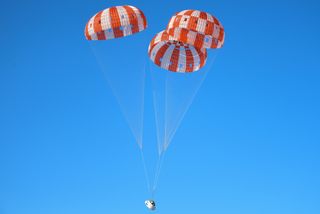
Wednesday, September 20, 2017: NASA's Orion spacecraft parachutes down from the sky over Arizona during a test on Sept. 13. The spacecraft, which is designed to take astronauts beyond Earth orbit in the next decade, dropped 4.7 miles (7.6 kilometers) from an aircraft to simulate a situation in which the astronauts would abort the launch, ejecting the capsule from the Space Launch System rocket. — Hanneke Weitering
Hurricane Maria on the Horizon
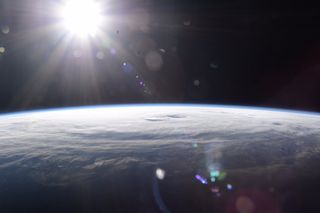
Thursday, September 21, 2017: The sun shines down on Hurricane Maria in this photo taken by NASA astronaut Randy Bresnik at the International Space Station. Beneath the mammoth storm, it was anything but sunny, as Puerto Rico got pummeled by dangerous winds, heavy rain and floods. "Far too many times this year we’ve been looking into the eye of monsters," Bresnik tweeted this morning. "Puerto Rico we look forward to seeing your beautiful shores again!" — Hanneke Weitering
A Sliver of Jupiter
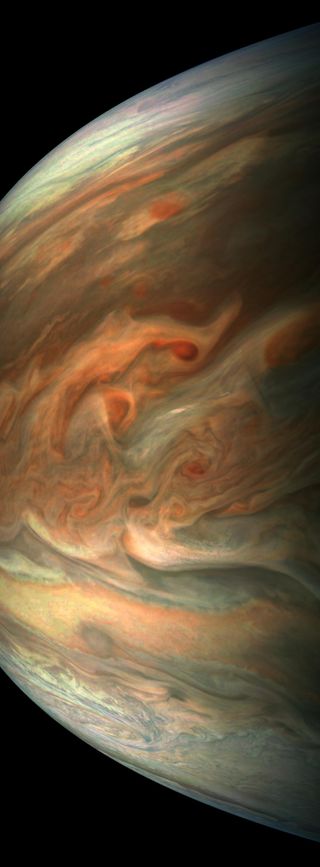
Friday, September 22, 2017: NASA's Juno spacecraft flew over Jupiter's cloud tops on Sept. 1 and captured this photo of the planet from 4,707 miles (7,576 km) away. Citizen scientist Gerald Eichstädt processed the raw image from the spacecraft's JunoCam to create this picture. The view focuses on features in Jupiter's dark band that are nicknamed "Whale's Tail" and "Dan's Spot." — Hanneke Weitering
Galaxy NGC 6753
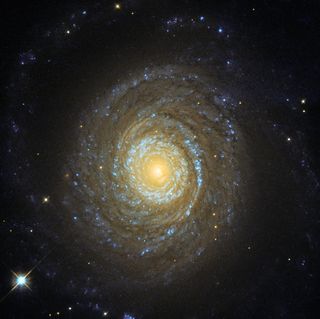
Monday, September 25, 2017: The radiant, unbarred spiral galaxy NGC 6753 twinkles in deep space in this image taken by the Hubble Space Telescope. It is one of only two known spiral galaxies both close enough and massive enough for astronomers to study its corona, or a cloud of hot gas surrounding the galaxy. NGC 6753 lies 150 million light-years from Earth in the southern constellation of Pavo. — Hanneke Weitering
'Sniffing' in Space
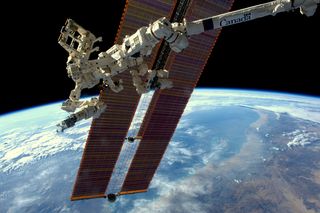
Tuesday, September 26, 2017: Outside the International Space Station, a two-armed robot named Dextre helps NASA locate an ammonia leak. Robotic operators at NASA's Johnson Space Center in Houston had Dextre grab onto a tool called the Robotic External Leak Locator, which "sniffed" for traces of ammonia around a suspected leaky valve. — Hanneke Weitering
Get the Space.com Newsletter
Breaking space news, the latest updates on rocket launches, skywatching events and more!
The Saturn Nebula
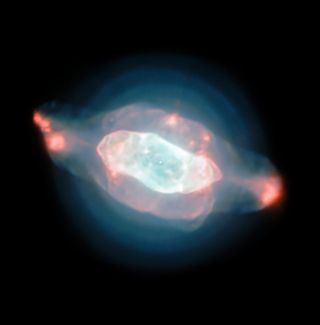
Wednesday, September 27, 2017: The planetary nebula NGC 7002, also known as the Saturn Nebula, glows in the darkness in this new image from the European Southern Observatory. It may be a planetary nebula shaped like Saturn, but this cosmic object is certainly no planet. Rather, it's a massive cloud of gas and dust, ingredients that form new stars. — Hanneke Weitering
OSIRIS-REx Earth-Flyby Photo
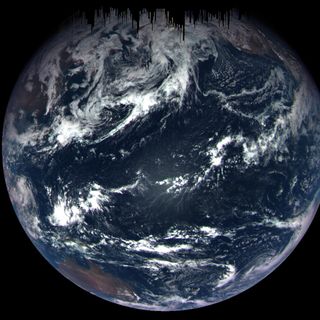
Thursday, September 28, 2017: En route to visit an asteroid, NASA's OSIRIS-REx spacecraft flew by Earth on Friday (Sept. 22) and captured this stunning photo of our "blue marble." The spacecraft passed 10,711 miles (17,237 kilometers) over Antarctica during the gravity-assist flyby, which gave the spacecraft a speed boost on its way to asteroid Bennu. — Hanneke Weitering
Kenya and the Cupola
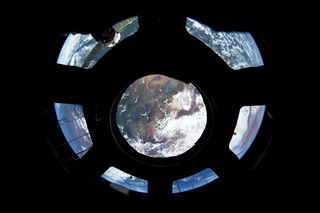
Friday, September 29, 2017: The Masai Mara National Reserve in Kenya passes beneath the International Space Station in this view from the Cupola window. "A magical place in Africa, the Masai Mara in Kenya is a place of exquisite natural beauty," NASA astronaut Randy Bresnik wrote when he shared the photo on Twitter today. — Hanneke Weitering
Join our Space Forums to keep talking space on the latest missions, night sky and more! And if you have a news tip, correction or comment, let us know at: community@space.com.

Space.com is the premier source of space exploration, innovation and astronomy news, chronicling (and celebrating) humanity's ongoing expansion across the final frontier. Originally founded in 1999, Space.com is, and always has been, the passion of writers and editors who are space fans and also trained journalists. Our current news team consists of Editor-in-Chief Tariq Malik; Editor Hanneke Weitering, Senior Space Writer Mike Wall; Senior Writer Meghan Bartels; Senior Writer Chelsea Gohd, Senior Writer Tereza Pultarova and Staff Writer Alexander Cox, focusing on e-commerce. Senior Producer Steve Spaleta oversees our space videos, with Diana Whitcroft as our Social Media Editor.











